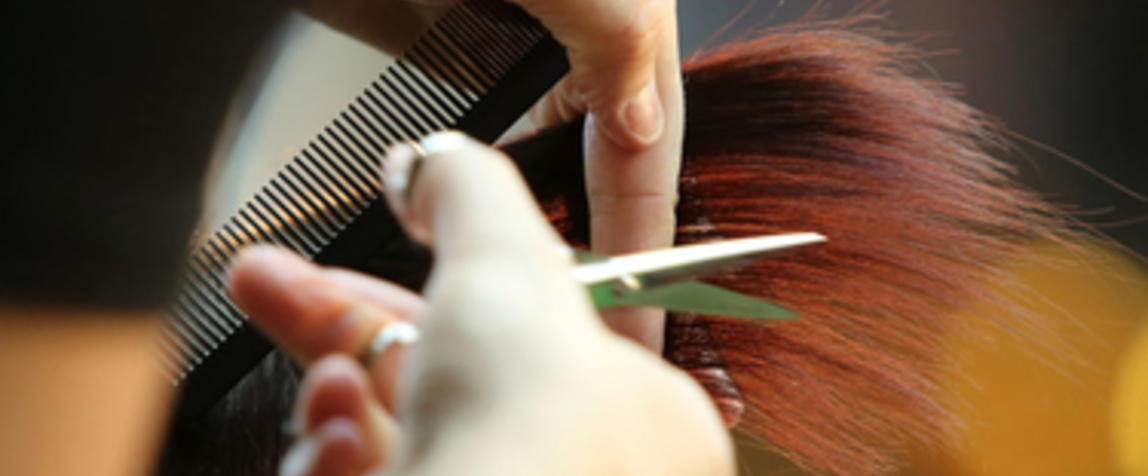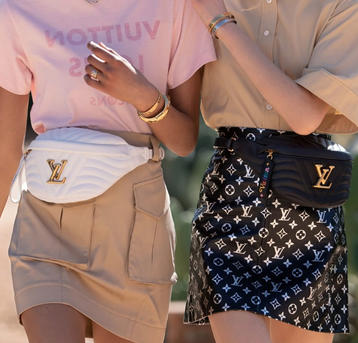13.4 million Australians pay for personal services; majority of Australians prefer to shop in-store; global face mask sales to reach US$10.5 billion; and net sales at L'Occitane surge 8.1 per cent.
13.4 million Australians pay for personal services
The term personal services casts a big net and includes a wide variety of activities from visits to the doctor to car servicing, house cleaning and pet care. More than 13.4 million Australians currently pay for a personal service and health and beauty are high on the list, reports Roy Morgan Research.
Hairdressing is the number one most popular service with over 6.2 million Aussies visiting a hair stylist in the average four week period – 36 per cent of women and 24 per cent of men, says the researcher. Women also dominate when it comes to personal grooming and health services. Over 1.5 million Australian women book a facial, waxing or manicure service in the average four week period compared to 186,000 men. Exercise classes such as yoga, pilates and strength training are enjoyed by 1.33 million women by contrast to 425,000 men. Alternative health services such as naturopathy, massage and acupuncture also attract more females than males – 1.42 million by contrast to 763,000 men.
Age plays a major role in the percentage of women who regularly visit a hair salon in the average four week period. Over 50 per cent of Pre-Boomers (born before 1946) head for the hairdressers, followed by 36 per cent of Baby Boomers, 35 per cent of Gen Xers, 28 per cent of Millennials and 18 per cent of Gen Zers.
But Millennials are the most likely demographic to pay for gym memberships – 20 per cent. Although fewer than half of Gen Zers fork out for personal services in the average four week period, reveals Roy Morgan. Younger Australians are more likely to pay for personal fitness training and personal grooming advice for colour/wardrobe consultations than the average person.
Majority of Australians prefer to shop in-store
In spite of the big figures, online sales are a long way from taking over from bricks-and-mortar stores in every country in the world. In the two largest retail markets in the world – China and the US – shops still accounted for 69 per cent and 89.9 per cent of total retail sales, respectively, in 2018. In Australia, online sales represent 7.25 per cent of total retail sales, says Statista, with bricks-and-mortar stores accounting for 92.75 per cent.
A new report – The Real Retail Story – from Blis, the international data technology company, reveals that 63 per cent of Australians prefer the bricks-and-mortar experience. E-commerce is only preferable when it comes to travel and most respondents claimed they spent more time in-store by contrast to online.
The role of the physical sector is as important as ever, says Nick Ballard, managing director, Blis Australia and New Zealand. "Consumers do not see a delineation between online and offline shopping, rather the modern consumer journey fuses both worlds and it is imperative that brands and retailers do the same".
Aussies are very keen on showrooming and webrooming – visiting stores before buying online or checking on the Internet before heading for a shop. Forty three per cent of Australian consumers admitted to showrooming and 63 per cent like to webroom. A further 59 per cent use their smartphones while in-store to check prices, read reviews, ask family and friends for opinions and trawl for discounts. Brands looking to succeed in this climate must appeal to today's shopper by offering an omnichannel experience that uses mobile as the bridge between digital and physical, adds Ballard.
Global face mask sales to reach US$10.5 billion
The number of face mask launches has accelerated from a trickle to a flood over the past two years. A new report from Persistence Market Research estimates that global sales will reach US$10.5 billion by 2026. But growth isn't evenly spread, notes the US researcher. The Asia/Pacific market, excluding Japan, will account for 80 per cent of worldwide sales.
Face mask selfies have propelled the category only with younger consumers, says Persistence Market Research. The rise of multi-benefit products which address the signs of ageing – sagging skin, wrinkles, loss of radiance and enlarged pores – have led to significant growth with older demographics. Men have also become more interested in face masks, notably for their pore-declogging benefits.
Modern lifestyles are also fueling revenues because of the increased availability of face masks in portable tubes and sachets. Peel-off masks are expected to be the leading sub-category, followed by cream and clay masks. Face masks containing natural ingredients such as botanical extracts and warm oil masks are also set for surging growth over the next five years.
Net sales at L'Occitane surge 8.1 per cent
L'Occitane's new Pulse Strategy has revved up major growth worldwide. The French prestige brand acquired British luxury skincare brand Elemis in January for US$900 million and has kicked another goal for its 2019 financial year with net sales surging to 1.426 billion euros (AUD$2.34 billion) – an increase of 8.1 per cent year-on-year. Net profits also jumped by 21.8 per cent to 117.6 million euros (AUD$193.38 million).
The US is the number one market for the company, accounting for 16.3 per cent of sales. Net sales in the American market rose to 232.4 million euros (AUD$382.17 millon). L'Occitane pulled back from Sephora USA over the fiscal year, but sales through Amazon "covered" the shortfall.
Japan was the second largest market for L’Occitane (16.3% of sales), followed by China (12.5%) and Hong Kong (9.6%). But the three fastest-growing markets were: China (+6.9%), Brazil ( +5.9%) and Russia (+5.4%). As L'Occtane continues to diversify with the Elemis and LimeLife makeup acquisitions, the core L'Occitane en Provence brand still accounts for 87.4 per cent of global net sales.
Snippets from the Wires
- A new report from the Asia Pacific Travel Retail Association (APTRA) is great news for the beauty industry. Beauty products are the number one category purchased by younger Chinese travellers aged 18 to 30 – 43 per cent – in travel retail. Fashion and accessories were almost as popular with 41 per cent of Gen Z and Millennial Chinese shoppers purchasing in both categories.
- Sun protection is a hot sector as skin cancer rates worldwide continue to rise. S.C. Johnson, the US multinational with global sales of US$10 billion, has acquired Florida-based Sun Bum, which also makes the Baby Bum range. Sun Bum is stocked by leading retailers in the US, including Ulta Beauty and Target.
- Many beauty and cosmetic multinationals consider India to be the next big growth market. The inaugural CosmoProf India Mumbai exhibition was held last September. The second iteration, staged from June 12th to 14th, has delivered explosive growth. Exhibitor numbers more than doubled to 237 from 23 countries and attendees followed suit with an increase of 48 per cent to 7429. According to Enrico Zannini, general manager of Bologna Fiere CosmoProf, the Indian cosmetic market is expected to grow by 9.7 per cent by 2023, with significant growth rates for the perfume sector (+19.6%) and makeup (+13.1%).




